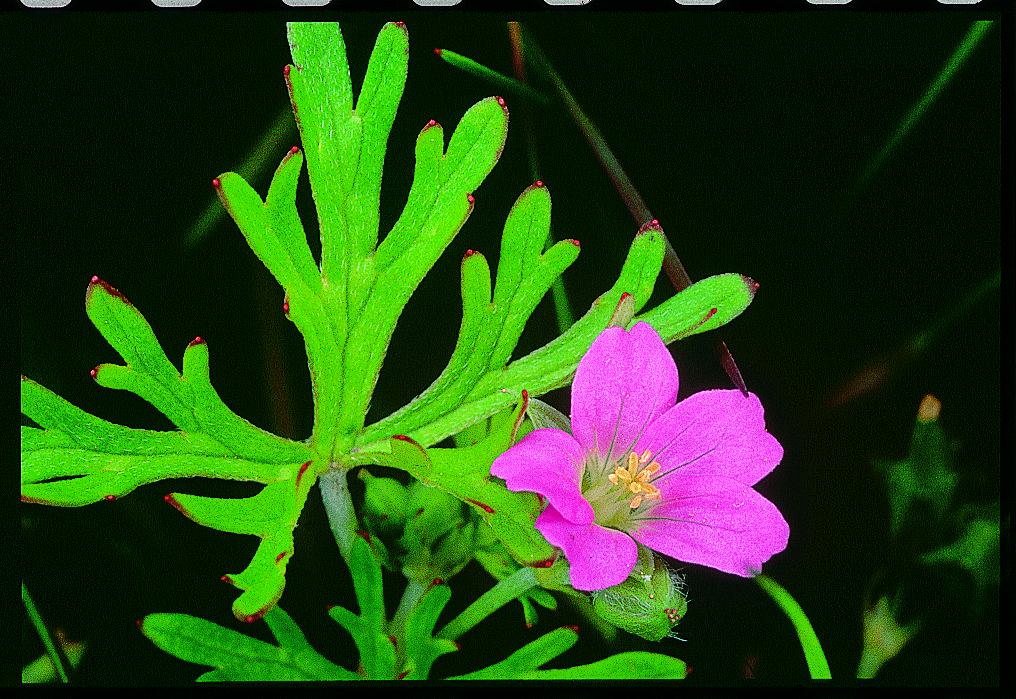
Grassland Crane's-bill
Geranium aff. retrorsum (Grassand)
Small creeping herb to 30 cm tall and 1 m wide, with much divided leaves growing on long stalks. Dark green leaves with distinctive tangled appearance, with 3-7 deeply trisected narrow lobes. Paired flowers are bright pink to magenta, on stalks growing from the leaf axils. Taproot turnip-shaped or cylindrical.
| Details | |
|---|---|
| Flora Type | Herbs |
| Distinctive Features | The seed case looks like a bird's beak, hence the name Crane's-bill. The stem is covered in fine hairs that are directed downwards (retrose). |
| Biology | Perennial with a parsnip-shaped taproot. Occurs predominantly in lowland grasslands and grassy woodlands. Tolerates seasonal drought conditions but intolerant of prolonged inundation. Seed has an awn or bristle that helps it to pierce the soil crust for germination. |
| Native Status | Native |
| Flowering Time | Jul-Jan |
| Taxonomy | |
|---|---|
| Phylum | Tracheophyta (Vascular Plants) |
| Class | Magnoliopsida (Flowering Plants) |
| Order | Geraniales |
| Family | Geraniaceae |
| Genus | Geranium |
| Species | graniticola |
Many Geranium species have branched or single tapered tuberous taproots that were roasted as food by Aboriginal people. The roots of some species contain high levels of tannins and were used as an anti-diarrhoeal.
| Interesting Facts | |
|---|---|
| Similar Species | There have been taxonomic revisions in this group. Geranium retrorsum ssp. retrorsum is a forest species. Also confusion with G. beardsdellii, G. pallidiflorum, G. inundatum and the G. solanderi complex. Flowers similar to G. solanderi but half the size. |
| Native Status | Native |